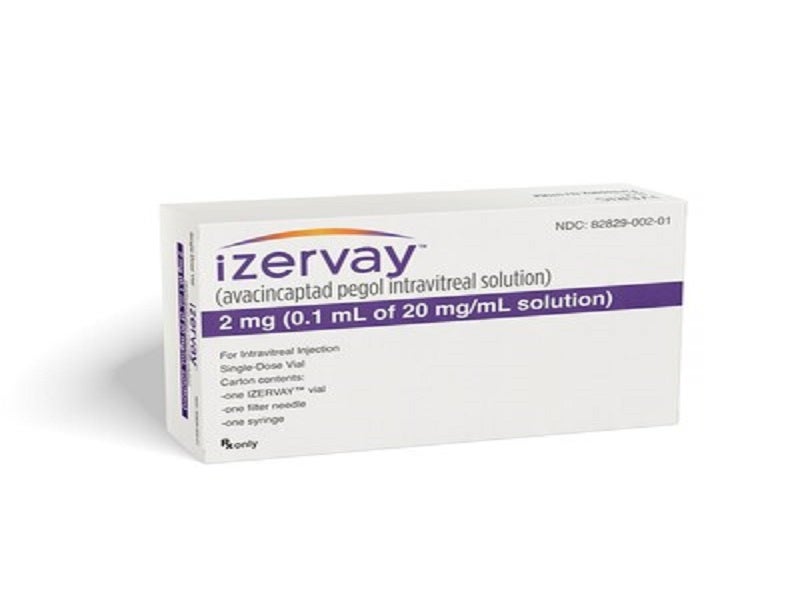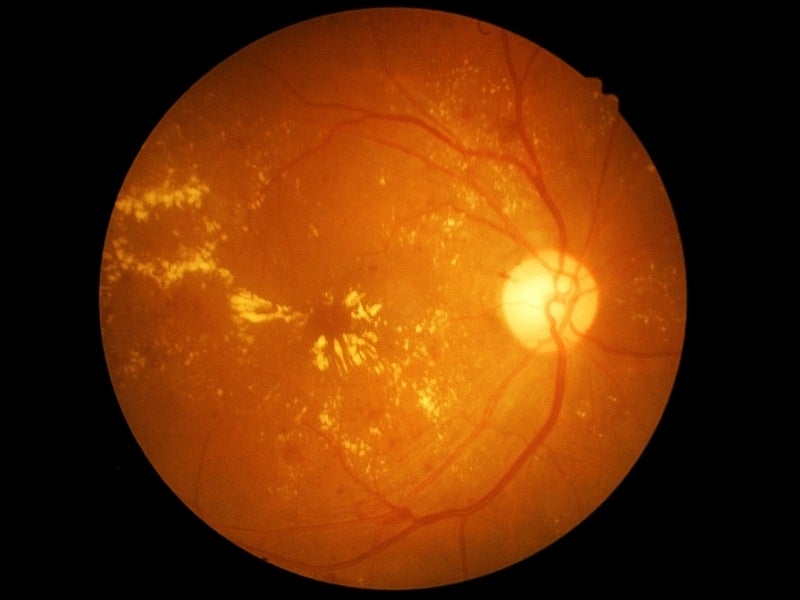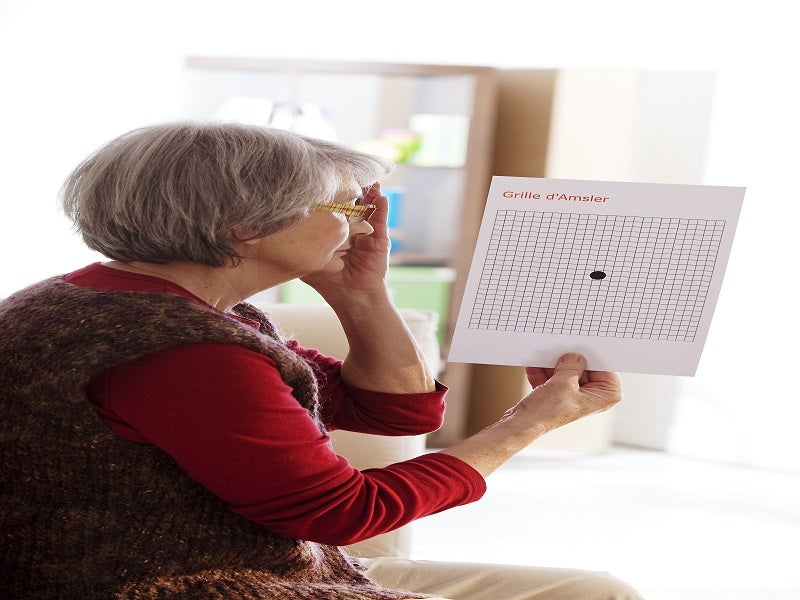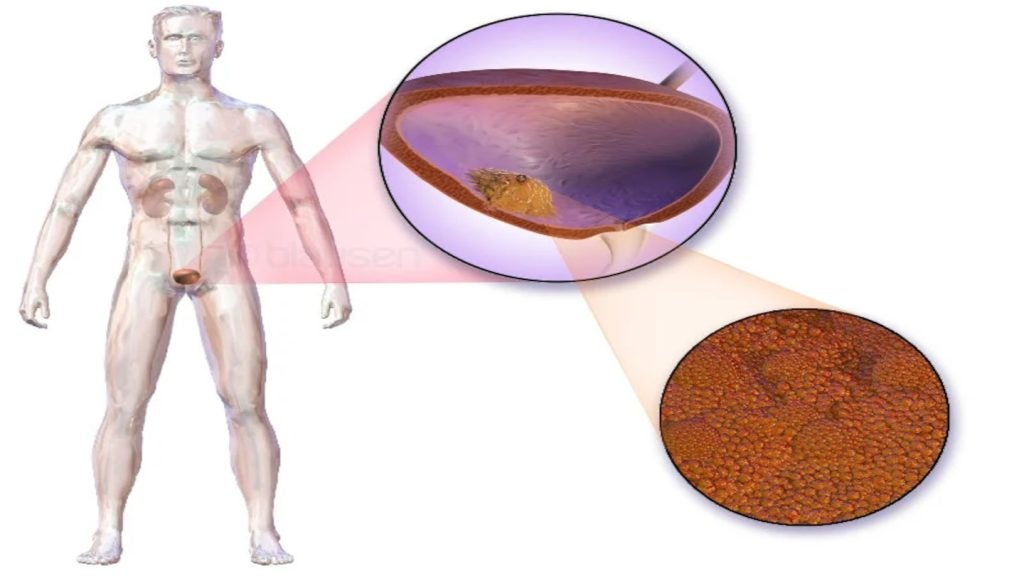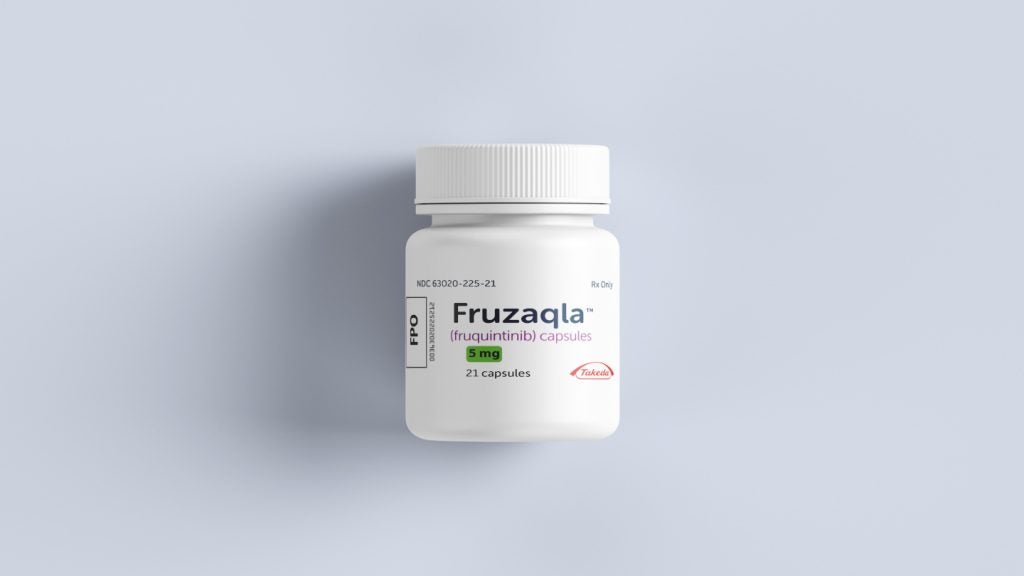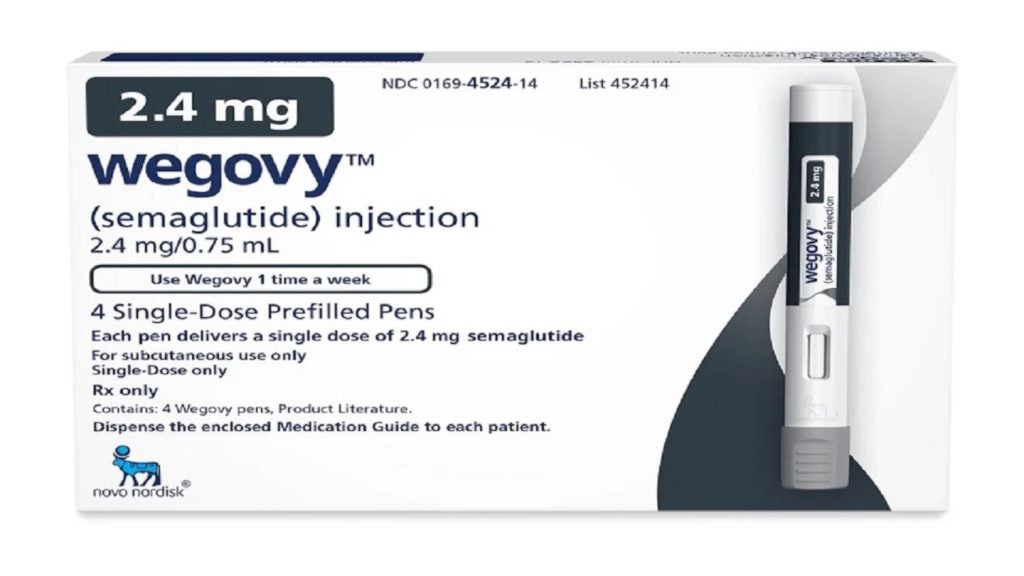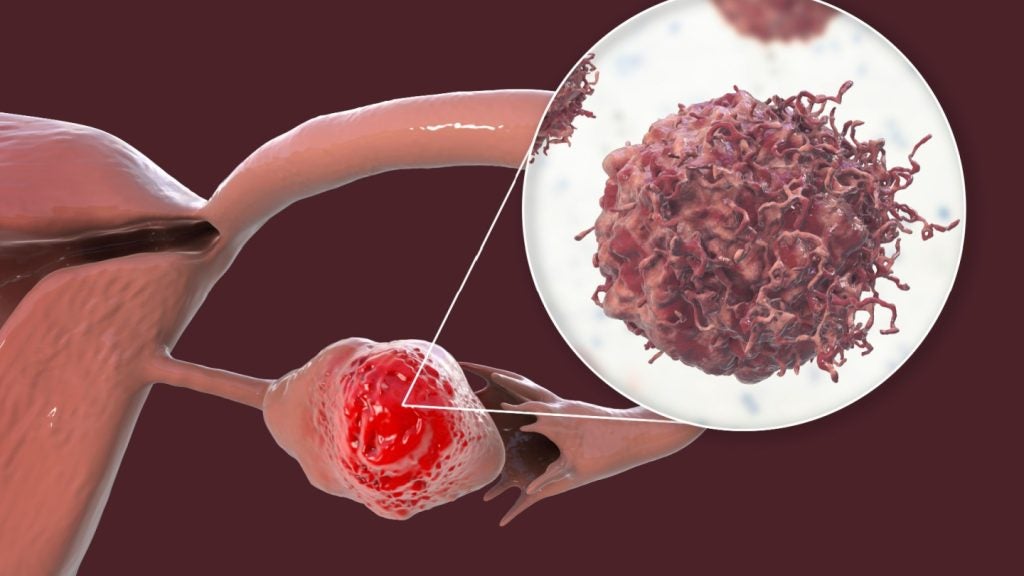Izervay (avacincaptad pegol) is a complement C5 inhibitor indicated for treating geographic atrophy (GA) secondary to age-related macular degeneration (AMD).
The therapy was developed by Iveric Bio, a biotechnology company based in the US. Following Iveric Bio’s acquisition in April 2023, avacincaptad pegol, also known as Zimura, became part of the ophthalmology lineup of Astellas Pharma, a pharmaceutical company based in Japan.
Izervay is available as a clear to slightly opalescent, colourless to slightly yellow solution in single-dose vials in 20mg/ml dosage strength for intravitreal injection.
Regulatory approvals for Izervay
ACP received breakthrough therapy designation for the treatment of GA secondary to AMD in November 2022.
Iveric Bio completed the submission of its new drug application (NDA) for a rolling review of ACP to the US Food and Drug Administration (FDA) for treating GA secondary to AMD in December 2022.
The NDA was based on the 12-month prespecified primary efficacy and safety outcomes from the pivotal clinical trials GATHER1 and GATHER2.
The FDA accepted the NDA for ACP and granted priority review in February 2023. The drug was approved by the FDA in August 2023.
Geographic atrophy causes and symptoms
GA refers to the later-stage cases of dry age-related AMD, which is the major cause of moderate to severe central vision loss in ageing adults, affecting both eyes in most patients. It is an eye condition that affects the macula, a small area in the retina’s central portion.
As AMD advances, the loss of retinal cells and the underlying blood vessels in the macula leads to marked thinning or atrophy of retinal tissue. GA associated with AMD leads to further irretrievable loss of vision.
The symptoms of GA include loss of visual sharpness, difficulty in reading, driving, doing crafts, or any other activity that relies on central vision, a dark spot in the central vision, difficulty seeing in dim light, and colours becoming dull or less vibrant.
GA impacts approximately 1.5 million people in the US, yet it is estimated that roughly 75% of those with GA remain undiagnosed. Without timely intervention, 66% of people with GA may experience blindness or significant visual impairment.
Izervay’s mechanism of action
ACP is an RNA aptamer, a PEGylated oligonucleotide that binds to and blocks complement protein C5, thus preventing its breakdown into C5a and C5b and decreasing membrane attack complex formation.
The drug was observed to decelerate the progression of GA by targeting the source of retinal cell death. It may also conserve the upstream advantages of the complement system.
Clinical trials on Izervay
Izervay was evaluated in global, randomised, double-masked, sham-controlled, multicentre phase III GATHER1 and GATHER2 clinical trials.
The study enrolled 286 participants with GA secondary to AMD in the 18-month GATHER1 trial and 448 in the 12-month GATHER2 trial. The study aimed to evaluate the safety and efficacy of the intravitreous administration of Zimura in the participants.
The primary efficacy endpoint in both studies was based on the GA area measured by fundus autofluorescence at three time points – baseline, six months, and 12 months.
In GATHER1, Izervay showed a reduction in the mean rate of GA growth of 27.4% over 12 months for the AVP 2mg cohort and 27.8% for the AVP 4mg cohort compared with the corresponding sham cohorts.
The study demonstrated statistically significant results for the AVP groups. AVP was generally tolerated after monthly administration over 12 months.
The GATHER 2 study met the primary endpoint with a 14.3% reduction in the mean rate of growth in GA over 12 months using square root transformation and a 17.7% reduction using the observed GA area.
The studies showed statistically significant results with a favourable safety profile. The disease progression also slowed down as early as six months with up to a 35% reduction observed in the first year of treatment.
The most common adverse effects reported in participants receiving Izervay during the clinical trials were conjunctival haemorrhage, increased intraocular pressure, blurred vision, and neovascular age-related macular degeneration.

